2 min read
Identifying and Isolating Target Keywords and Topics using SEMrush
![]() Monica Caraway
:
October 28, 2019
Monica Caraway
:
October 28, 2019

SEMrush is a SaaS tool that helps you target your marketing efforts by analyzing data on any website -- your own and your competition’s. Learn how to find the best keywords and topics to target using SEMrush with these tips below.
Isolating Keywords
There are two really good tools to help find the best keywords to optimize for using SEMrush:
1) Keyword Gap Analysis
2) Keyword Magic Tool
Keyword Gap Analysis
Start at the dashboard where your domain should be already loaded. Or you can easily add a domain by selecting the Add Domain green button.

You’ll be taken to the domain’s overview page. From here select Organic Research on the left. 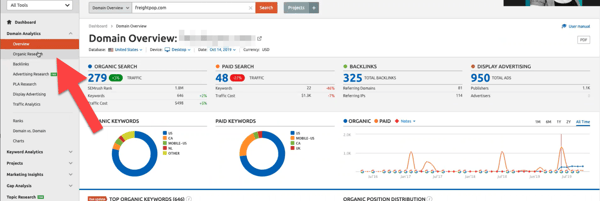
This will give you a look at the overall keywords your domain is ranking for. With the below, for example, this website ranks for 646 keywords. From here, go to the Competitors tab.
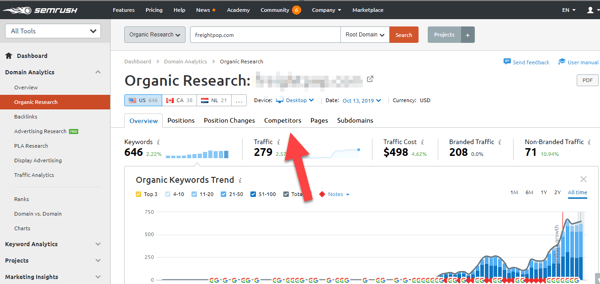
This will retrieve a list of competitors based on common keywords. You’ll need to determine if the listed domains are actual competitors before digging further. It doesn’t make sense to look at a domain that shares similar keywords, but has a different audience.
Download Marketing Checklists - Case Studies, Campaigns, & Optimization
You can click next to any of the competitors’ names to investigate their website.
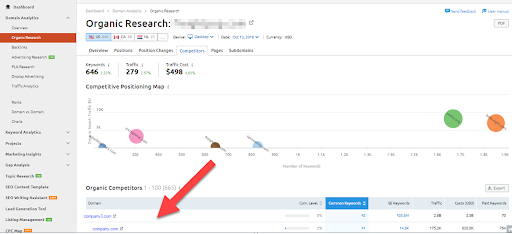
When you find a good competitor, go their Common Keywords column and click on the number. This will take you to the Keyword Gap tool.

In the Keyword Gap tool, you can compare up to 5 domains. 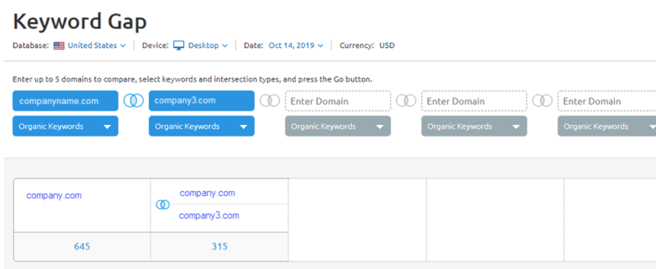
You can select to compare one domain to another, or vice versa. And you can filter by unique keywords - in other words, keywords that a competitor is using that your domain is not.
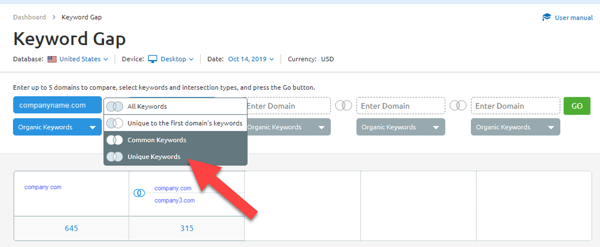
And you can also further filter to include or exclude specific words. Perhaps branded words might be excluded to filter out those keywords that you are not interested in targeting.
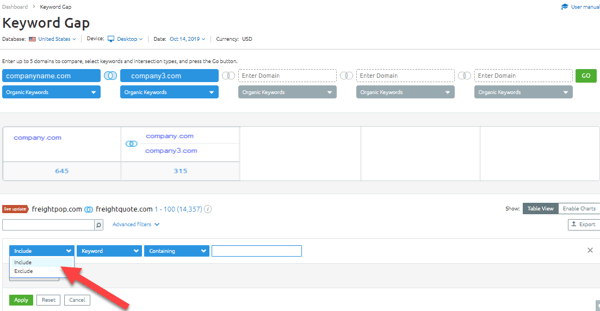
You can include multiple inclusions and exclusions in the Keyword Gap tool.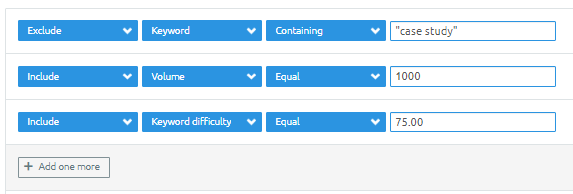
The basic rule of thumb is that you are looking for keywords that get a significant volume, but are also under 75% Keyword Difficulty rating. And as seen above, you can use a volume quantity and Keyword Difficulty percentage as part of the inclusion/exclusions.
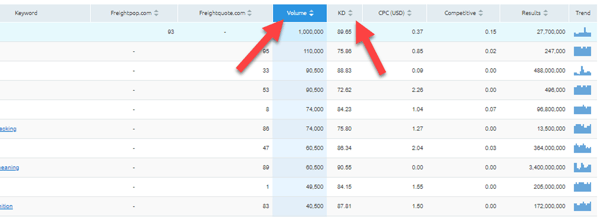
Once you’ve established a few keywords that fit the criteria, double check that it makes sense for your domain to write new content around - some may be off-base.
2) Keyword Magic Tool
Another useful tool to identify keywords is the Keyword Magic Tool. This is found on the far left under Keyword Analytics.

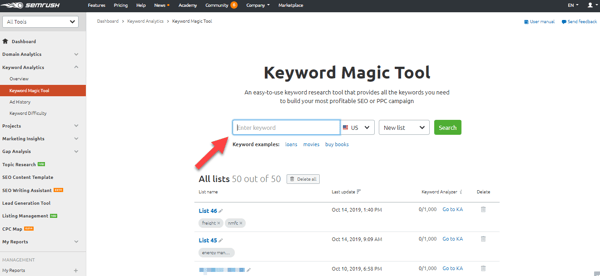
The keywords that come up can further be drilled down by Broad Match, Phrase Match, Exact Match, and Related.
In the Related column, the percentage listed is how closely the keyword/phrase matches the search query. So in the below example, the search is “freight” and that second keyword “freight delivery” is 40% related.
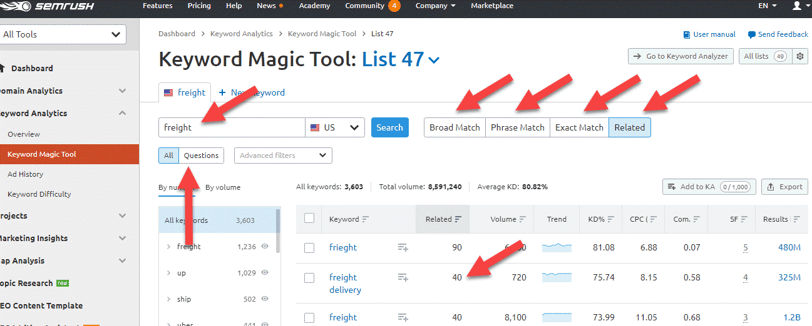
You can also search the keyword based on similar questions that are asked about the keyword. These questions are often the topics that show up in Google's "People Also Ask" sections, which can be hot topics for your audience. You can use these questions to write FAQ blog posts and perhaps grab that elusive Google Snippet!

You can also take questions or keywords from this area and get fresh data (as opposed to when SEMrush crawled the page) and export terms to other tools.
To get fresh data, select the icon just to the right of the keyword/question. You can add multiple or just one. Then go to the top and select “Go To Keyword Analyzer”.
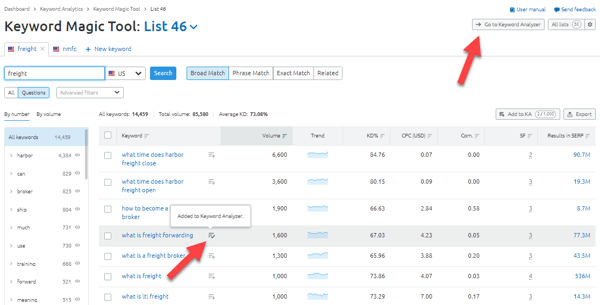
You can select each keyword(s)/question/phrase to add to other reports from this page by checking the box to the left of the word(s).
A box will come up asking what tool to send it to. After you select, another box will come up asking you which Project to assign it to.

For more SEMrush tips and general marketing tips, please subscribe to our blog here.
Resources
11 Actionable Marketing Tactics We Learned from Inbound 2019
5 Minute Video: How to Use Email Correctly for B2B Lead
Promote Your Product Launch Content in 5 Easy Steps
7 Steps to Effective Blog Posts: Free Checklist

